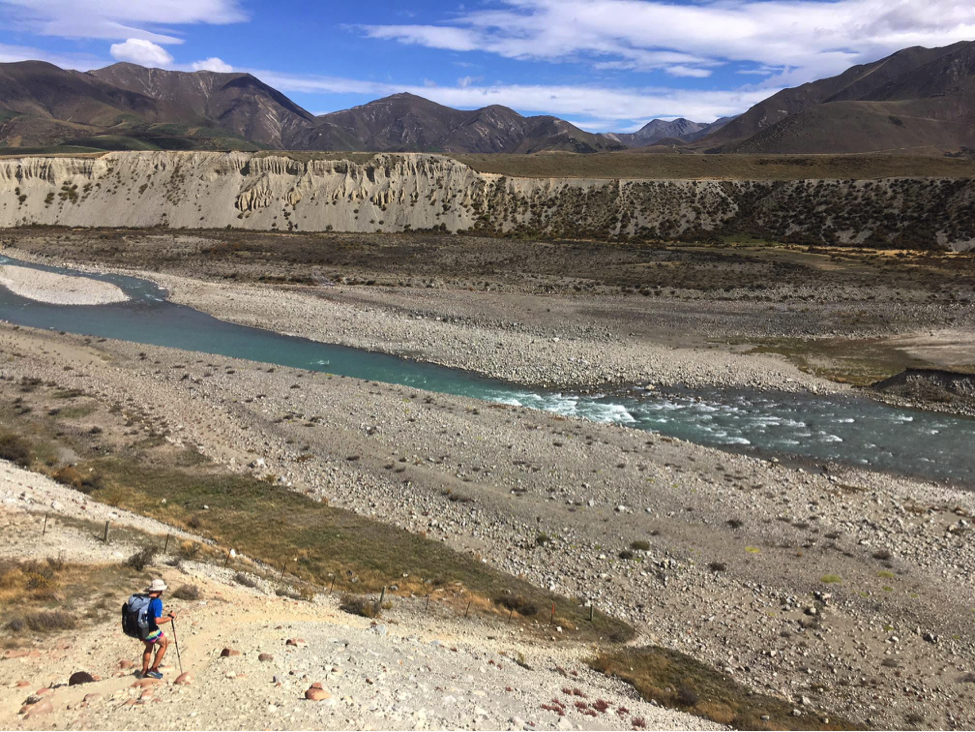new zealand
Our nature specialist, Everett, is a born explorer. Over the past few years his travels have taken him along the Appalachian Trail in the Eastern United States, and through numerous pathways across Western Europe. In March he visited New Zealand’s South Island, and describes for us here a couple of nights spent in contrasting accommodations in one of Earth’s most unspoilt areas.
March 12, 2018
Imagine the most beautiful blood-red sky and a gentle wind playing on the surface of a clear blue lake. Waking up here at Lake Ohau was gradual, and a treat for the senses. We had pitched our camp in this spot after a 53 mile bike ride from Lake Tekapo on the previous day and, I’ll admit, sleep came quickly due to exhaustion and the intense heat from the sun. We ate our porridge by the water’s edge and formulated a plan for the next leg of the journey. Our goal was to hike eighteen miles until we reached a small shelter.
Having packed away our belongings, we started uphill, and into a forest. Beech trees were common in this area, although I noted that they are a little different than beech trees in North America.Here on South Island, they have tiny little leaves which, when fall arrives, cover the ground in a striking natural confetti.
Bird life here is remarkable due to the unique sound of the bellbird, which accompanied our ascent into the lower vegetation. Once we passed through the forest, my companion and I found ourselves in a highland grassy area with spike grass that is surprisingly sharp to the touch!
The trail was not well-marked. We often strayed off-course but finally reached the top of the mountain pass. At the summit, the spike grass disappeared and the terrain was now quite rocky. Without the shade of trees, a temperature of just 70 degrees felt somewhat warmer in the intense sun. In spite of our best intentions and practical precautions….yes, we did get sunburnt, after all!
The following is placeholder text known as “lorem ipsum,” which is scrambled Latin used by designers Coming down from the mountains, we were met by farmland and green fields where sheep are put to pasture once their summer sojourn in the mountain-tops has ended. Our attention was also drawn to seemingly endless patches of ground that was punctuated by rabbit holes. It seemed like there were miles and miles of them! Rabbits are not a native species here, and so this discovery was somewhat surprising and, even, a little entertaining! The amount of holes offered a clear insight into just how prolific rabbits can be.
River crossing in New Zealand is memorable due to a lack of man-made bridges. This, of course, results in experiencing wet feet at regular intervals depending on the route taken. Sometimes water is too high to cross due to spring flooding from the melting snows. In those situations, it is necessary to be a careful observer of nature before deciding on a course of action. For instance, if a hiker listens carefully to the river and hears the sound of moving rocks, he can confidently make up his mind to wait (sometimes for days) until the ice-cold water recedes.
Our experience crossing the Ahuriri River was comparatively uncomplicated, although with a heavy pack to carry, it was challenging to keep our balance in the turquoise waters. Facing upstream helped us to avoid being flipped over and it was refreshing to feel the cold water temperature on our well-travelled feet.
We were now getting closer to our shelter accommodation, passing through more of the land reserved for sheep pasture and getting excited by the thoughts of approaching dinner time.
The first thing we typically do once we arrive at a shelter is get water, which will be used for meal preparation. As we have discovered, water takes quite some time to boil. You can see in the following photograph the contents of our pantry, our kitchen and our sink.
It is definitely different sleeping in a shelter with solid walls. For a start, it can be a much quieter experience. If the weather is at all windy, which it was during this trip, a tent can be a rather noisy place to get some rest. As I prepared to turn in for the night, I was grateful for the sense of calm afforded by the reduction in sound. We had a wonderful night’s sleep here, despite the fact that my sunburnt legs had to remain outside the sleeping bag!
If you are considering a trip to this unspoilt country, I can offer my wholehearted encouragement. This is a destination filled with new sensations and unexpected experiences. Put it on your bucket list, and don’t forget the sunblock!







